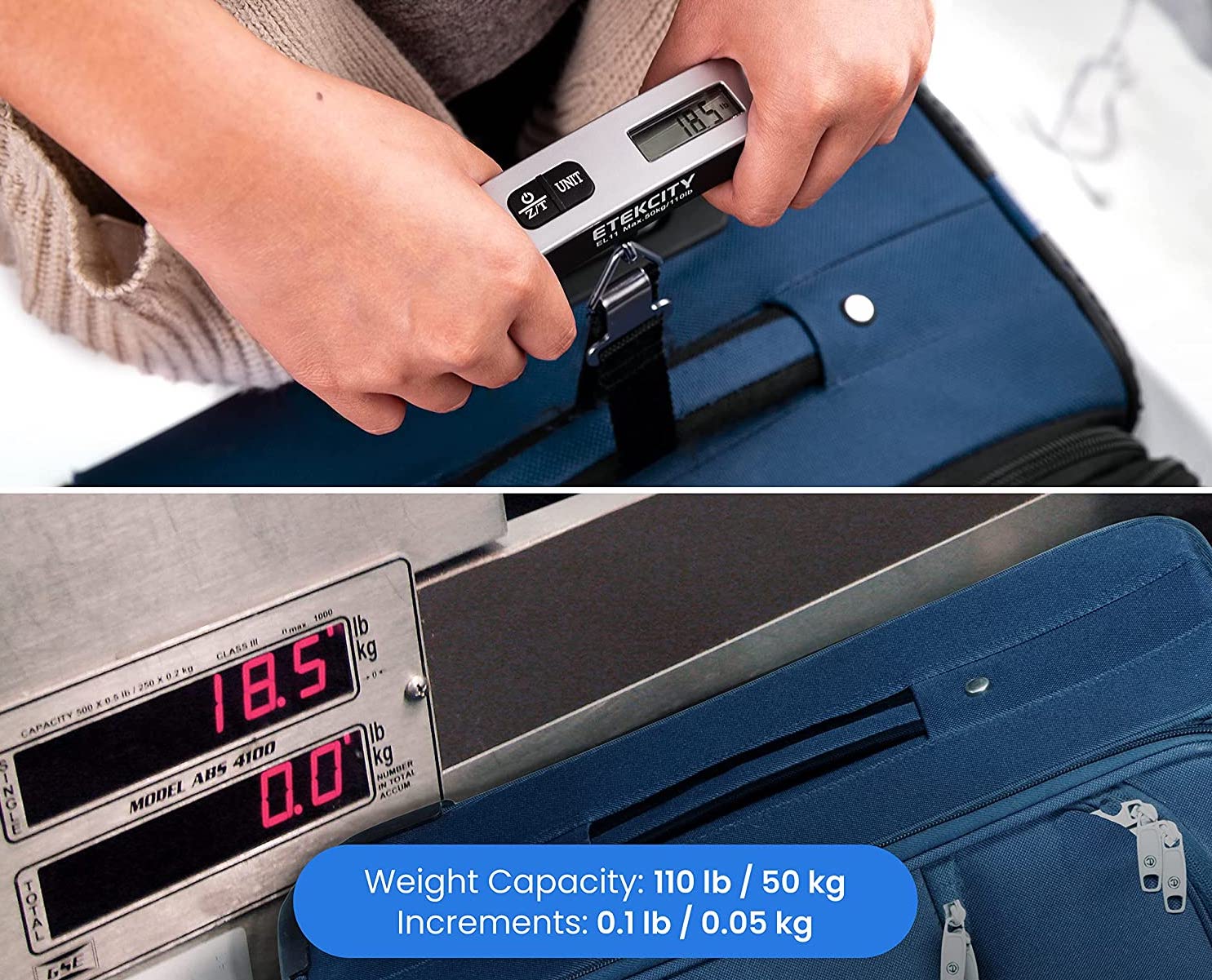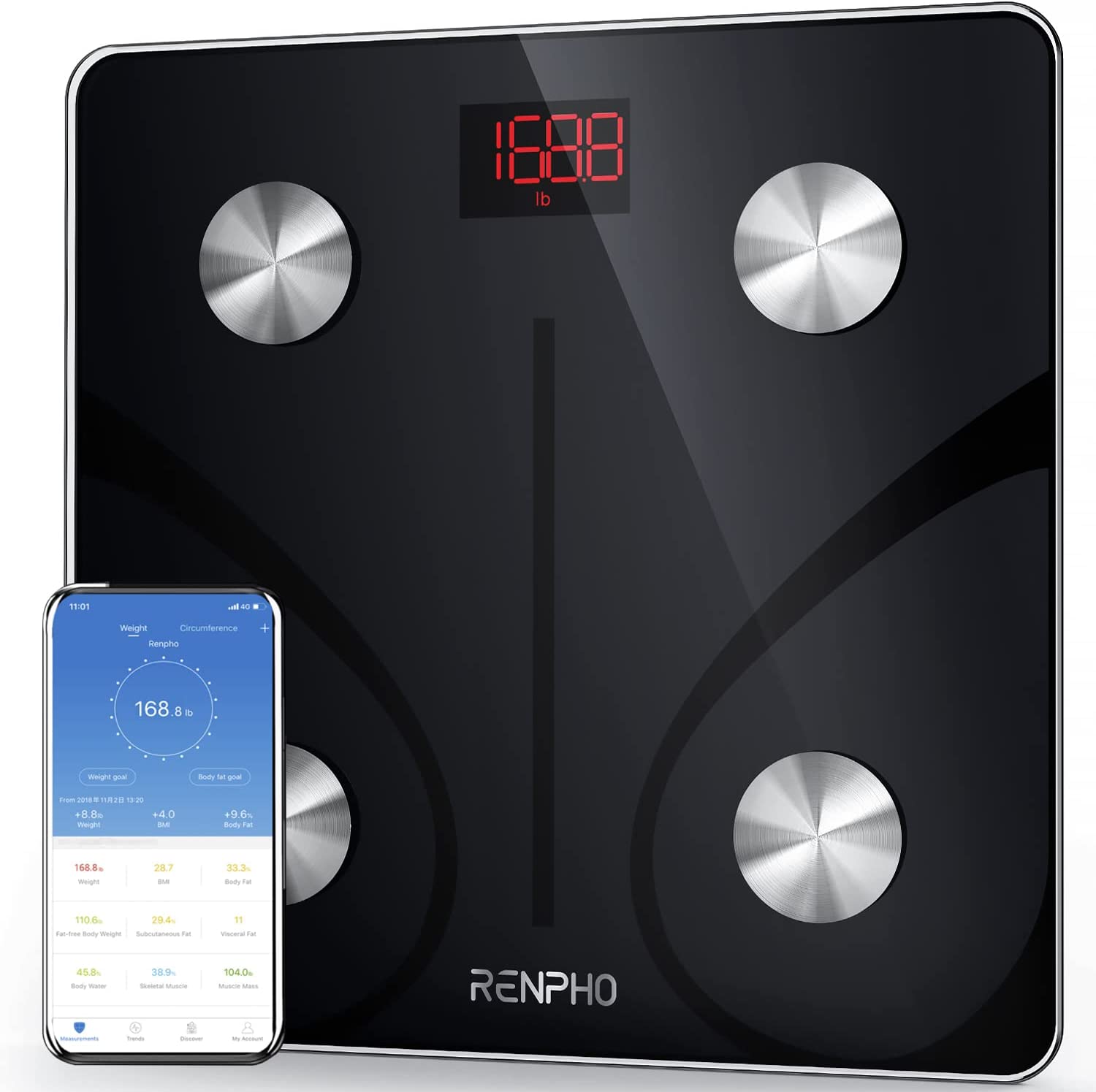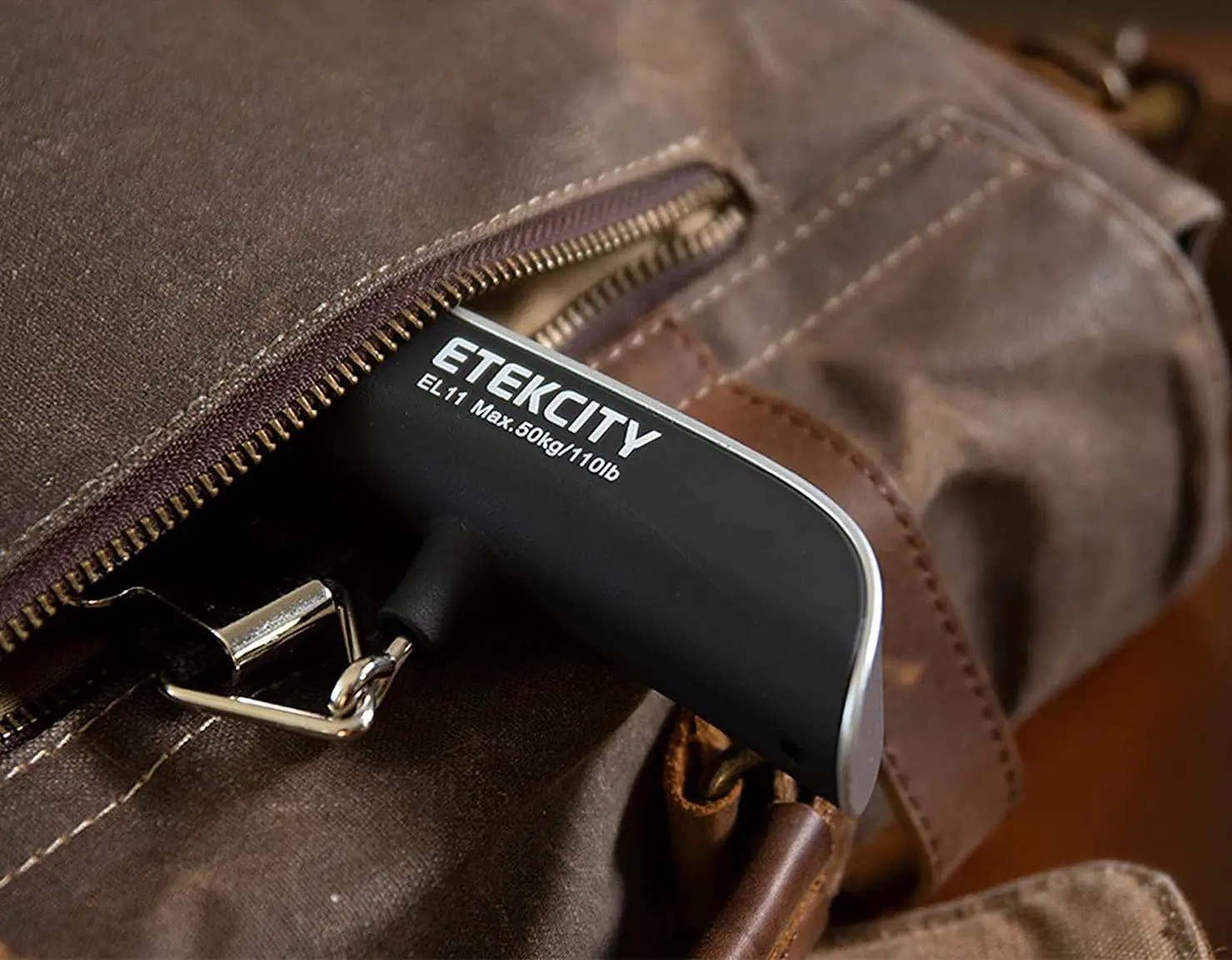Have you ever had to dump some of your luggage at the airport – or open it and toss around clothes from one bag to another – just before boarding your flight? How great did that feel? If you’ve ever gone through that, I’m sure you’ve at least considered a portable weighing scale. But even if you had a luggage scale, can they be trusted?
Are portable luggage scales accurate? The definitive answer is yes, they are. Portable luggage scales come in handy, too, especially for the frequent traveler. There’s a variety of products, differing in both design and features, which we’ll describe further into the article. However, they all share one characteristic: accuracy.

Maybe you only came here for a quick answer and recommendation? Here’s a quick version of our recommendations: they’re the best value we could find, and all come ready to go with their necessary battery:
- For a straightforward and minimalistic design: see this portable luggage scale.
- For a temperature-reading, industrial-looking product: check out this portable scale (pictured above)
How to weigh your luggage on a portable luggage scale
You do not want to be the reason that a portable scale gives a false reading, so you must make sure you weigh your luggage correctly. Doing so will save you the untimely inconvenience of having to offload some of your luggage at the airport, or paying hefty fees for the extra weight.
Getting an accurate reading by following these steps.
- Check your airline ticket and confirm your baggage allowance. This may vary according to the class you’re traveling in, so don’t assume, for example, that you know the limits based on another passenger’s experience. Air travel, unlike other means of travel, operates on a very exact schedule – inconveniences such as trying to decide what to leave behind could easily cost you your flight. All in all, just be sure of your luggage allowance.
- Insert the required batteries into your portable luggage scale and power it on. Make sure that the initial reading is 0.00lbs. If this is not the case, then you’re likely to have a faulty scale on your hands, or at the very least, one that needs calibration.
- Select the unit of measure you want to use based on your location and confirm that particular amount on your baggage allowance instructions.
- The scale will come equipped with either a hook or a loop. Put this around your suitcase or bag handle at the top and make sure it is securely in place. Do not lift the luggage until you are ready to take the reading, as you’ll need to be very stable to get an accurate reading.
- Lift the bag using the scale for 10-15 seconds; this is to make sure the scale gets a full, accurate reading. The scale will beep to indicate it has taken the reading or flash a result on its small screen when done. Less expensive scales, however, may have none of these features but still be just as precise in their measurements.
- Confirm that the reading is within your allowed limit, remember to confirm that you are using the right unit (lbs. or kgs) per your baggage allowance, and measure it more than once to make sure you’ve got yourself an accurate reading.
- Now that may seem like a lot of writing for what essentially boils down to a simple task. However, it is much less bothersome to have to deal with this at home than at the check-in counter just before your flight than the headache caused by getting to the check-in counter with excess weight just hours before your flight.
Types of portable luggage scales
There are two types of portable luggage scales: the manual scale and the digital scale.
The Manual Scale
The manual scale has a standard clock-hand that rotates clockwise, indicating the weight of the load/travel bag. This portable scale has got at least two sets of reading measures (i.e., pounds and kilograms). Expect this scale to be plain in design, which may be more appealing if you’re looking for something simple and understated.
The Digital Scale
The digital scale has a light-up display panel that indicates the weight in digital numbers. This kind of portable scale comes in an extensive variety, both in design and in function. These scales are also relatively lighter in weight and easier to handle. If you like style and class, this is the kind of luggage scale you want to have.
Price of portable luggage scales (+other info)
The general price range for portable luggage scales is between 8 and 50 USD, both online and at different physical stores. The price for portable luggage scales depends on the brand you’re buying and the addition or subtraction of features. Additionally, manual scales tend to cost less than digital scales.
Another difference is choice. If you go for a digital portable luggage scale, you’ll also have a more extensive variety to choose from than its manual counterpart.
Weighing your luggage without a proper portable luggage scale
If you do not have a portable luggage scale, you may opt to improvise by using other scales:

1. Use a bathroom scale
It is quite simple:
- First, check the luggage weight allowance per your airline (and your ticket). Keep this weight in mind.
- Then, make sure the scale is in an open area where it is not leaning on anything. There should also be enough space for you to stand on the scale while holding the luggage. Any support will cause a faulty reading, as some weight will not be taken into account by the scale.
- Get on to the scale without any luggage and check for your weight reading. Jot it down in a notebook or on a piece of paper.
- Pick up your luggage and make sure you are able to carry it stable, as any instability will also give you a false reading. If you are unable to do so, or if it looks like you may be putting yourself in harm’s way, get someone to help you with this part of the process.
- Walk onto the weighing scale holding the luggage firmly in your hands. Wait until the scale gives a firm reading.
- Jot this new weight reading down and subtract your first value from this new one to get the difference between the two: this will give you the weight of your luggage.
- If you are above your airline’s allowed weight limit, remove some weight from the bag and repeat the process to obtain a new reading and a new calculation.
2. Buy luggage with a built-in scale
There are other ways to handle the weighing process:
Get a bag with a built-in scale. There’s a whole range of these travel bags, including a variety of suitcases containing this feature.
3. Use a kitchen scale that supports the weight
You may also use a kitchen scale, but only if it supports the kind of weight you are looking to measure. So long as you are within the limit, you will not damage the scale. Be advised, however, that the kitchen scale may be able to accommodate the weight but may not be designed to accommodate the bulkiness of an item such as a big bag.
4. Use a butcher’s scale
Use a butcher’s scale if you have access to one. These scales are heavy-duty and can weigh up to and above 100 kilograms.
5. Use an airport scale
Use an airport scale other than the one at the check-in counter; you will not completely avoid the inconvenience of having an extra weight at the airport, but at least it will give you a little more time to take care of your “overpacking.” There are often many scales at the airport for passengers to use before they get to the check-in counter.
Conclusion
All in all, if you are a frequent traveler, you may want to consider purchasing a portable scale to weigh your luggage before getting to the check-in counter. And of course, remember to distinguish between carry-on and any other kind of checked-in luggage.
You buy a portable luggage scale for convenience, portability, reliability (they tend to last a long time), and most importantly, the accuracy.

